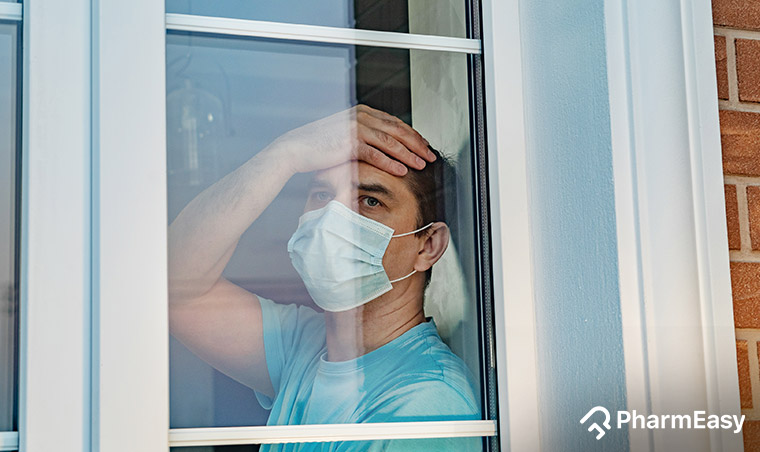What To Do When COVID-19 Hits Home: A Blog For People Who Are COVID Positive
By Dr. Nikita Toshi +2 more

Get,

to manage your symptom
Get your,


4 Cr+ families
benefitted

OTP sent to 9988776655



You’ve successfully subscribed to receive
doctor-approved tips on
Whatsapp

Get ready to feel your best.

Hi There,
Download the PharmEasy App now!!


Register to Avail the Offer
Send OTPBy continuing, you agree with our Privacy Policy and Terms and Conditions

Hi There,
Sign up on PharmEasy now!!
Trusted by 4 crore+ families

OTP sent to 9988776655



You have unlocked 25% off on medicines




Code: NU25
By Dr. Nikita Toshi +2 more
The recent months have been testing times for everybody in India. Families are getting affected and the COVID-19 infection is spreading faster than before. Although you may not be completely prepared to deal with the situation, proper care of a COVID-19 positive patient in your family is essential while keeping the rest of the family safe.

This article discusses some critical points that you can follow if the virus enters your home and affects a family member.
Table of Contents
It is worrisome if a family member tests positive in the RT-PCR test for COVID-19. Here are a few steps that you should follow when you know you have a COVID-19 positive patient at home.
Consult your family doctor or find a doctor nearby for emergency consultation. If he/she has recommended home isolation for the infected member, you may take care in the following manner:
After the laboratory tests and the scan for the COVID-19 positive patient are completed, you must follow all the instructions given by your doctor. If your doctor advises home isolation, you need to prepare for several things to take proper care of the patient. At the same time, protect the rest of the family and yourself from getting infected. The following tips will help you get through:
Home isolation is a method that ensures you keep the infected person away from the rest of the family. Here are a few instructions to follow during home isolation:
It is necessary to provide healthy food to the patient.
While you regularly monitor the patient’s oxygen levels and temperature, you should watch for a few more warning signs. Your family member might need oxygen or a ventilator bed. Keep the doctor’s contact number handy. Immediately call a doctor and seek admission to the hospital if you notice the following signs:
While taking care of the infected family member, the following preventive steps are necessary to control the spread of the virus to the rest of the family:
Talk to your doctor about when to end home isolation and the necessary tests to be carried out. Take proper precautions to avoid the spread of the infection. Stay vigilant and immediately contact the doctor in case of an emergency. Help your loved ones recover from COVID-19 while in home isolation.
Disclaimer: The information provided here is for educational/awareness purposes only and is not intended to be a substitute for medical treatment by a healthcare professional and should not be relied upon to diagnose or treat any medical condition. The reader should consult a registered medical practitioner to determine the appropriateness of the information and before consuming any medication. PharmEasy does not provide any guarantee or warranty (express or implied) regarding the accuracy, adequacy, completeness, legality, reliability or usefulness of the information; and disclaims any liability arising thereof.
Links and product recommendations in the information provided here are advertisements of third-party products available on the website. PharmEasy does not make any representation on the accuracy or suitability of such products/services. Advertisements do not influence the editorial decisions or content. The information in this blog is subject to change without notice. The authors and administrators reserve the right to modify, add, or remove content without notification. It is your responsibility to review this disclaimer regularly for any changes.

Leave your comment...
Comments